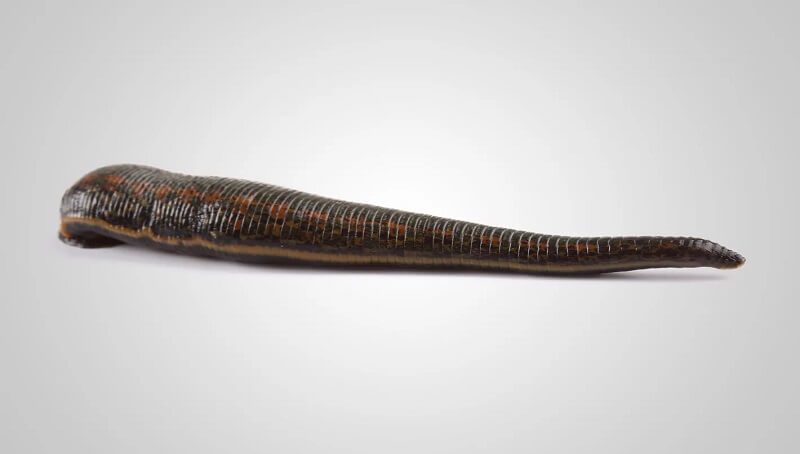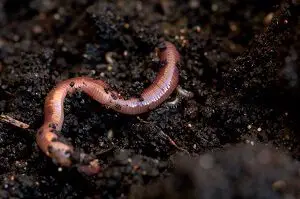
Tortoiseshell Cat Health Problems To Know Of
July 5, 2022
Why Are Cats Staring at You
July 6, 2022
The brain has become the object of study of various researches because the human being still cannot fully decipher the functioning of each sector. But did you know that there are animals without brains? Contrary to what you might think, this does not mean that they are unable to develop normally. In reality, they have other mechanisms to fulfill their life cycle according to the requirements of their environment.
How do animals survive without brains?
Although it would be unattainable for humans, there are many species of animals on the planet that lack brains and that, despite this, carry out their life cycle normally. Most of these species are marine animals, as many retain morphologies similar to those they had thousands of years ago before life began to exist on land.
How do these animals survive?
Each species has special adaptations that allow it to exist, feed, reproduce and excrete, although it is difficult to talk about a single physical structure that would “replace” the brain. In reality, whether it is a medullary system, arms or tentacles developed in a particular way, nodes, nerve networks, or other structures, each species has different adaptations that allow it to survive.
Here are some of the animals with no brain that exist:
- Starfish
The starfish belongs to the order of the Asteroid and is an invertebrate animal that inhabits the deep sea. It is characterized by having between 5 and 50 arms, depending on the species, which it uses to reproduce, hunt, and excrete. Therefore, the life cycle of a starfish is complete.
These marine animals do not have an adequate brain. They have a nervous system made up of nerves and the nervous plexus which sends information from different parts of the body, functioning as a kind of brain “distributed in parts”. Because of this, they are able to receive and recognize different stimuli and send “orders” about what each part of the body should do.
- Sea cucumber
Sea cucumbers are Echinoderms characterized by having a long, soft body and living in the depths of the oceans. Like starfish, cucumbers are among animals without brains or hearts.
How do they survive? First, they have different nerve endings in their small tentacles and pharynx, so they receive stimuli and send responses based on what they perceive from their environment. In terms of the absence of a heart, they have an aquifer vascular system, which carries water, protein, and potassium ions throughout the body. Thanks to this, sea cucumbers are able to perform all their vital functions.
The jellyfish belong to the Medusozoa subfile and are among the oldest marine species in the world since they appeared during the Cambrian, five hundred million years ago. They are among the animals without a nervous system, in addition to having no brains, and some species stand out because they are part of the list of animals that shine in the dark.
They survive because their skin is covered with a network of interconnected nerves that send information about what they are touching. This system is called a diffuse or lattice system. In addition, some species have ocelli, organs capable of detecting light.
- Coral
Under the name coral, they comprise various types of marine organisms that organize themselves into colonies of small individuals. Although at first glance they appear to be rocky or vegetal formations, especially when they form large reefs, in reality, they are animals.
You might also like my article on animals that slither.
Corals lack a heart, nervous system, or brain, but they are made up of millions of small individuals called polyps, who are organized to create large coral formations and catch prey. In addition, they perceive everything around them, with their small tentacles with nerve endings.
- Anemones
The anemones belong to the Actiniaria order and, as with corals, at a first glance appear to be plants, but in reality, they are marine animals that grow attached to a substrate of sand or rock.
They have no brain or heart, but they can be said to have the primitive nervous system that allows them to maintain their vital balance according to the stimuli they receive from the environment. They also have no organs formed, but they have tentacles and “organelles”, simple structures with stinging properties.
- Marine sponges
Marine sponges, animals from Porifera, are among the brainless marine animals and the oldest in the world because they inhabited the oceans of Precambrian. Their bodies have internal pores and channels with which they can pump water, besides having flagellated cells, which are able to change their function according to what the sponges need.
Due to this latter feature, sponges do not require specific organs or a defined nervous system, since all their vital activity is carried out at the cellular level.
- The Portuguese man o’ war
The Physalia physalis or The Portuguese man o’ war is an organism formed by a colony of individuals, but whose appearance is similar to a jellyfish. They measure between 15 and 30 centimeters and are made up of very small hydrozones. They are organisms that group together to survive. In this colony relationship, different organisms distribute essential vital functions, although they lack a defined nervous system, heart, or brain.
- Sea lily plant
The sea lily plant is a kind of echinoderm, like the sea stars, from the Crinoidea class. It is characterized by a “plant-like” appearance with many branches. They’re very old because there are records of them from the Paleozoic. They have no brain, but like other echinoderms, they have a nervous network that allows them to perceive what is happening around them.
- Lancetfish
The Lancetfish (Branchiostoma lanceolatum) is one of the marine animals without brains because it is a very primitive species. It measures only 5 centimeters and, apart from the lack of a brain, it has no skeleton or sensory organs. The Lancet has a poorly defined nervous system that is also not protected by the vertebrae.
- Ctenophora
Ctenophora are a phylum of marine invertebrates about which very little is known. There are about 200 species, and in many cases, they form a large number of that set of organisms we call plankton.
Their bodies are simple and variable, because some have tentacles and a jellylike shape, while others do not. They lack a circulatory or excretory system, but they have a simple nervous system, although they do not have a brain. Like other marine animals, the nervous system is distributed in networks throughout the body and, thanks to this, they are able to receive stimuli.
- Leeches
 The leeches (Hirudinea) can survive in marine, terrestrial or freshwater environments. They are characterized by the fact that they have an elongated body, somewhat fatty and viscous. They are predatory animals and some species feed on blood. Leeches have no brain, but they have nerve networks that are distributed throughout the body due to small nodes and sensory organs.
The leeches (Hirudinea) can survive in marine, terrestrial or freshwater environments. They are characterized by the fact that they have an elongated body, somewhat fatty and viscous. They are predatory animals and some species feed on blood. Leeches have no brain, but they have nerve networks that are distributed throughout the body due to small nodes and sensory organs.
- Worm
The earthworm (family Lumbricidae) is among terrestrial animals without brains. Despite their name, they prefer to live in wet environments, although they are popular at digging holes in the ground to move around. The anatomy of this species is simple: A mouth, an anus, and a series of muscles throughout the body.
They have a circulatory system dominated by a central valve that acts like the heart. As for the nervous system, they do not have the brain formed. They have multiple nodes which perform the function of receiving nerve impulses that are perceived.
Do insects have brains?
As you may have noticed, most animals without brains are marine, but what about land animals? They usually have fully formed brains, even in those small species, such as insects. Insects possess a well-defined nervous system, which distributes to the head, chest, and abdomen, where nerve ganglia are located in different amounts; these ganglia capture nerve impulses or stimuli.
Insects have a “main” brain and some “secondary” brains, called ganglion masses. The main brain is located above the esophagus, which is why it is called a supraesophageal ganglion. The other three secondary brains are:
- Proto-brain: It is located in the esophagus, where the annelids were originally. It’s in charge of vision.
- Deutobrain: It is located in the esophagus and connects with antennas, which perceive olfactory stimuli.
- Tritobrain: Smaller in size, it is located under the main brain and controls the sympathetic nervous system, that is, visceral functions and taste.
Do fish have brains?
There has been a widespread belief that fish have low intelligence and short memory, so it is common to think they do not have a brain. However, most of these vertebrates possess brains (except for very primitive species) as well-defined as the rest of their vital organs.
Compared to the rest of the body, this vital organ is divided into several regions, just like that of terrestrial species. Moreover, the brain of fish has a unique feature: even outside its body, it is able to continue its neural activity for several hours.
Why don’t these animals have brains?
The main reason why these animals do not have brains is that they do not need one. The brain consumes a lot of energy. If you don’t need it, it makes more sense for your body not to have one in the first place. This allows the animal to eat less to stay alive.
According to latest research, the human brain consumes 20% of our energy. This consumption is enormous. Scientists believe these animals had more brains than they currently have, but they got rid of it to survive. The fact that they can live by consuming less energy can be an advantage, especially underwater. All the animals listed above are very simple and perform very few functions.
